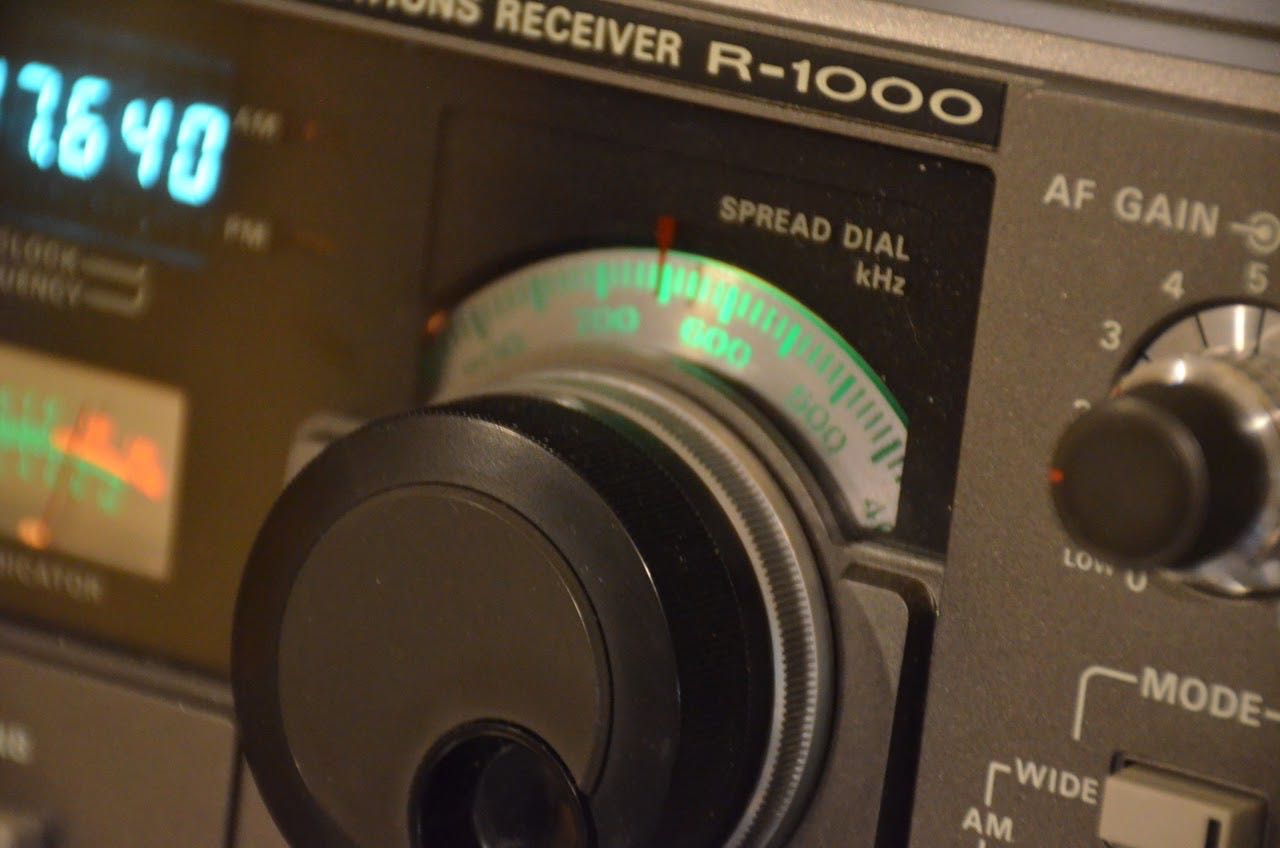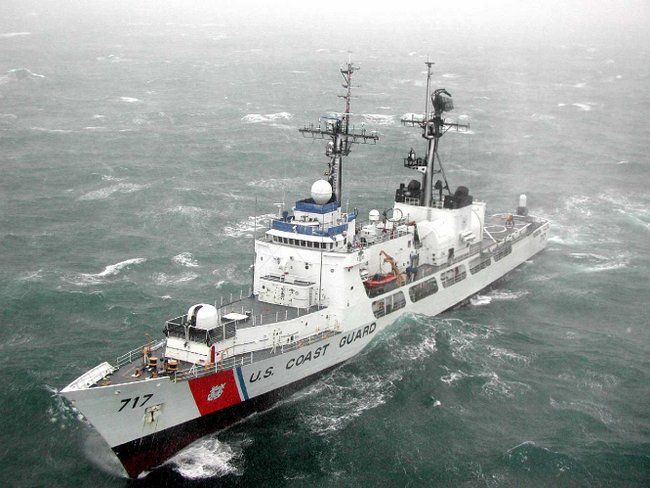Many thanks to SWLing Post contributor, Jock Elliott, who shares the following guest post:
Keeping an ear on the US Coast Guard
By Jock Elliott KB2GOM
Wandering the vast expanses of YouTube, I encountered an episode of “Coast Guard Alaska” on DangerTV’s Protecting Our Waters/Coast Guard Rescue Series playlist. One episode led to another, and before long, I was binge-watching the series.
Why? Because the courage, dedication and performance of the “Coasties” is just extraordinary. They dangle from hoist cables to pluck survivors from the water, injured sailors from the decks of ships, mariners from sinking vessels, and even incapacitated hikers from mountains. They medevac sick and injured men, women, and children out of remote Alaskan villages; provide medical support while flying them to higher levels of care, and intercept drug smugglers in southern waters. I stand in awe of these men and women. (And – woe is me – it turns out there are similar series for Coast Guard Pacific Northwest and Coast Guard Florida.)
So, I wondered, could I hear the US Coast Guard on the radio? The answer, it turns out is a mixed bag.
The U.S. Coast Guard ceased monitoring all High Frequency (HF) shortwave voice distress frequencies within the contiguous United States and Hawaii on 7 February 2022. HF voice distress watchkeeping continues unaffected in Alaska and Guam. See below for the Alaska and Guam USB frequencies.
| kHz SHIP STATION | kHz COAST STATION | Station and Schedule (UTC) NOJ (Kodiak AK) |
| 4125 | 4125 | 24 HRS |
| 6215 | 6215 | 24 HRS |
| 8291 | 8291 | 24 HRS |
| 12290 | 12290 |
| kHz SHIP STATION | kHz COAST STATION | Station and Schedule (UTC) Guam |
| 6215 | 6215 | 0900-2100Z |
| 12290 | 12290 | 2100-0900Z |
Note: 12290 kHz is available under NOJ upon request
Note: 16420 kHz is available at NOJ and Guam upon request
So, if you have a good radio capable of upper sideband (USB) reception, a decent antenna and your location and/or propagation favors you, you might have a shot at hearing USCG Alaska or Guam HF communications.
National Weather Service Marine Products via U.S. Coast Guard HF Voice
 You have a much better chance of hearing the U.S. Coast Guard broadcasting National Weather Service high seas forecasts and storm warnings from six high seas communication stations. See table below for station locations and schedules. Transmission range depends on operating frequency, time of day and atmospheric conditions and can vary from only short distances to several thousand miles.
You have a much better chance of hearing the U.S. Coast Guard broadcasting National Weather Service high seas forecasts and storm warnings from six high seas communication stations. See table below for station locations and schedules. Transmission range depends on operating frequency, time of day and atmospheric conditions and can vary from only short distances to several thousand miles.
For example, I have heard a weather forecast from the US Coast Guard Communications Command in Chesapeake, including a forecast of tropical weather from the National Hurricane Center, on 4426 USB at my home in upstate New York.
Here are the schedules:
Chesapeake (NMN)
|
||||||
| 4426, 6501, 8764 kHz (USB) | 0330Z1 | 0515Z2 | 0930Z1 | |||
| 6501, 8764, 13089 kHz (USB) | 1115Z2 | 1530Z1 | 2130Z1 | 2315Z2 | ||
| 8764, 13089, 17314 kHz (USB) | 1715Z2 | |||||
| 1 Offshore Forecasts, hurricane information
2 High seas Forecast, hurricane information Broadcast of hurricane and other weather broadcasts from this station may on occasion be preempted, as the frequencies are shared with other USCG stations. |
||||||
New Orleans (NMG)
|
||||||||
| 4316, 8502, 12788 kHz (USB) | 0330Z1 | 0515Z2 | 0930Z1 | 1115Z2 | 1530Z1 | 1715Z2 | 2130Z1 | 2315Z2 |
| 1 Offshore Forecasts, hurricane information
2 Highseas Forecast, hurricane information Broadcast of hurricane and other weather broadcasts from this station may on occasion be preempted, as the transmitters are shared with the radiofax broadcast. |
||||||||
Pt. Reyes (NMC)
|
||||
| 4426, 8764, 13089 kHz (USB) | 0430Z | 1030Z | ||
| 8764, 13089, 17314 kHz (USB) | 1630Z | 2230Z | ||
| Broadcast of hurricane and other weather broadcasts from this station may on occasion be preempted, as the frequencies are shared with other USCG stations, and the transmitters are shared with the radiofax broadcast. | ||||
Kodiak (NOJ)
|
||
| 6501 kHz (USB) | 0203Z | 1645Z |
Honolulu (NMO)
|
||||
| 6501, 8764 kHz (USB) | 0600Z | 1200Z | ||
| 8764, 13089 kHz (USB) | 0005Z | 1800Z | ||
Guam (NRV)
|
||||
| 6501 kHz (USB) | 0930Z | 1530Z | ||
| 13089 kHz (USB) | 0330Z | 2130Z | ||
Coastal Maritime Safety Broadcasts on VHF
The other place in the radio spectrum where you might hear voice transmissions from the Coast Guard would be on the maritime VHF channels. Urgent marine navigational and weather information is broadcast over VHF channel 22A (157.1 MHz) from over 200 sites covering the coastal areas of the U.S., including the Great Lakes, major inland waterways, Puerto Rico, Alaska, Hawaii and Guam. Broadcasts are first announced over the distress, safety and calling channel 16 (156.8 MHz) before they are made. All ships in U.S. waters over 20m in length are required to monitor VHF channel 16, and must have radios capable of tuning to the VHF simplex channel 22A.
Although VHF signals are generally short range, here at El Rancho Elliott, I can clearly hear the announcement on channel 16 on a scanner and then I can switch to channel 22A to hear the broadcast, even though my location is at least 140 miles from the nearest large body of water. In addition, propagation sometimes opens up so that VHF signals can be heard at long distances.

